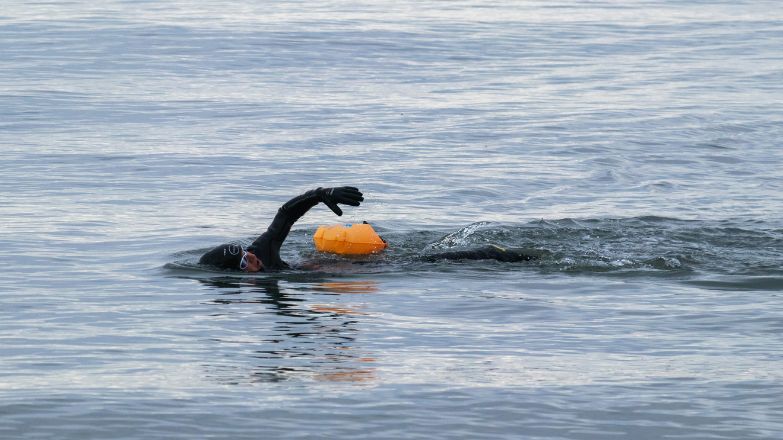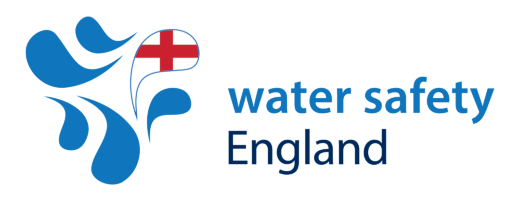Open Water Swimming

Variously termed 'wild' and 'open water' swimming, this activity is not new but is enjoying something of a revival in the UK. Open water can be used to describe rivers, lakes, natural pools and the sea. Recreational use of water should be encouraged, but equally it is important to enjoy the activity safely. Each year, on average 19 people drown when swimming in open water.
This advice page has been produced in conjunction with lifesaving and rescue organisations, sport governing bodies, and specialists who coach, lead and regularly take part in open water swimming. On this page, you can download our detailed advice, read our FAQs, and find out more about open water swimming safety.
Top tips for safer open water swimming
- Get to know where you are swimming and check the condition before going in.
- Make sure you are properly equipped.
- Beware of the cold.
- Make sure someone knows where you have gone and why, and that you have the means to call for help, especially in remote locations.
- Take note of local safety advice and respect the countryside, landowners and other users.
The advice can be downloaded here.
What is cold water shock?
It’s the body’s short term, involuntary response to being suddenly immersed in cold water. It is considered to be a principal underlying factor in a drowning death. After sudden immersion, a number of things happen:
- closure of the blood vessels in the skin result in increased resistance to blood flow. The heart then has to work harder and blood pressure increases.
- at the same time there is a 'gasp' response, along with a dramatic change in the breathing rate, meaning the ability to keep controlled steady breathing is lost for a while.
The effect of these can lead to a sense of panic, inhalation of water, leading in some circumstance to a cardiac arrest. You can see the effect of cold water shock in this BBC video.
What can I do to limit the effects of cold water shock?
Cold water shock lasts normally up to 3 minutes and can be reduced by wearing a well-fitting wetsuit, entering the water slowly, and over time becoming used to the effects of cold water by repeated exposure (habituation). In the right situation, wearing a lifejacket or buoyancy aid will greatly increase your chances of survival.
If there is an accidental fall into the water from a bank-side without a wetsuit, using techniques such as ‘float-first’ can help. This involves essentially tucking-up and floating on your back, focusing on just staying tucked and controlling breathing, up to the point at which you can self-rescue or be helped by others.
How do I know a location is safe to swim?
The safest open water spots to swim are lifeguarded/supervised beaches and outdoor pools, as these locations will be regularly checked, managed and often used by swimming, triathlon and lifesaving clubs. These sites have safe swim zones and provide supervision or a lifeguarding service. The Environment Agency holds a list of designated bathing waters in the UK at which the water quality and risks of pollution are assessed. Many of these sites are, however, not supervised.
Away from these sites, it becomes more difficult to check:
Clubs and associations often hold lists of locally known spots. It becomes a question of ensuring that you have, or can access, the right knowledge and experience to establish if the site and conditions are suitable. Furthermore, can you look after yourself, or others if needed? Locations to be particularly cautious about include:
- quarries and reservoirs, which can be deceptively deep and cold throughout the year.
- rivers with features such as weirs and fast flowing water.
- potentially polluted locations near to rainwater run-offs, livestock and estuarial waters.
As part of this, please respect the safety information the site owner/manager provides, especially if they have a no swimming or site-specific use policy.
What do you define as cold water?
We consider 15°C (50°F) to be cold water.
What are the illness and infection risks?
Beaches and open water environments are not sterile; there will always be some micro-organisms present. This means that there is always a small chance of becoming ill if people come into contact with these organisms. Various factors influence bathing water quality, including, the presence of cattle grazing in the area near the water, as run-off water can carry pathogens (harmful micro-organisms) from cattle on to the beach via streams running into the sea. Other risk factors include the presence of flocks of birds, proximity to a busy harbour, wind, currents and tides. Risks are increased during times of heavy rainfall, as run-off water can increase the number of pathogens. More detailed information and advice can be found in the PHE document: Swim Healthy.
